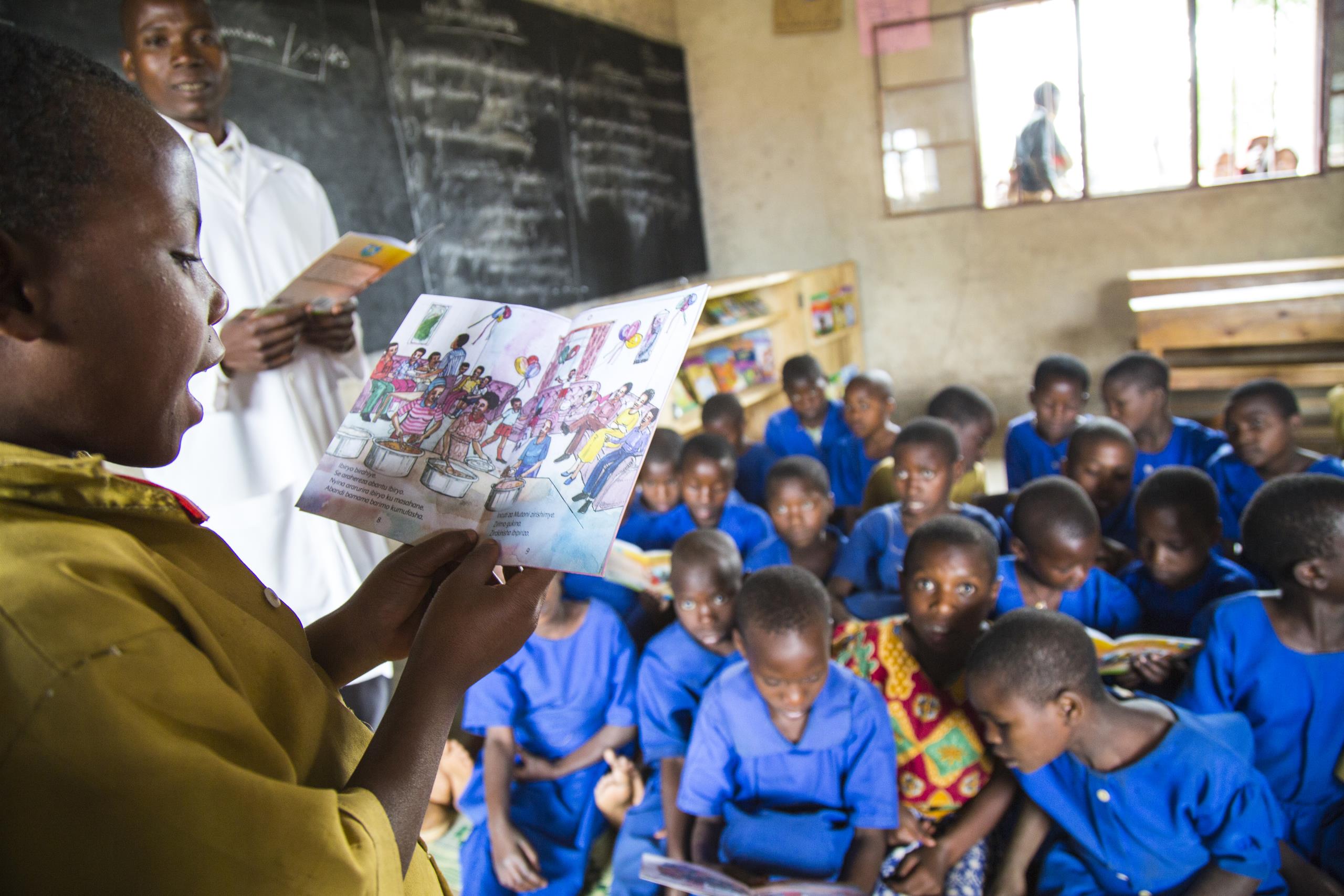In 2012, the UK and Rwandan Governments set up the Innovation for Education Fund to seek out and nurture innovation in the education sector. Managed by Cambridge Education, the Fund identified and piloted new ideas that offered cost-effective and equitable ways of improving learning and school attendance. Between 2013 and 2015, a total of GBP 11.9m ($16.9m) was invested in 26 innovation projects mapped against MINEDUC’s six strategic themes for education including accountability and empowerment, inclusive education, and effective teaching and learning.
The strategic role of evaluation
From the outset monitoring and evaluation (M&E) was critical for both the Fund Manager and the grantees – largely made up of NGOs and private sector organisations. The onus was on grantees to demonstrate how their projects improved learning outcomes as well as providing the Rwandan Government with guidance on the potential for scale up and wider adoption. To achieve this Cambridge Education provided intensive support to the grantees to ensure they had the necessary M&E capacity and systems in place and to undertake baseline studies.
The Fund took a three-pronged approach to M&E, which aimed to create a bigger picture of evidence about the projects. Firstly, outcome evaluation measured improvements against largely quantitative indicators to explain the elements that contributed to a project’s success or failure. Secondly, the more qualitative evaluation of the innovation process was used to explain the enabling conditions under which an innovation worked or failed. Finally, the project activities themselves were monitored to ensure continuous improvement in their implementation.
The importance of qualitative evidence
It can take a considerable amount of time and perseverance for innovations to begin to have a meaningful impact on learning outcomes. Cambridge Education anticipated it would be difficult to demonstrate improved learning outcomes in the two-year timeframe that the pilot projects had. We instead looked at a hierarchy of outcomes – focusing not only on the ultimate goal of improved learning, but also intermediary indicators which could be expected to lead to learning improvement, for example changes in attitude and teaching practices.
As Fund Managers, Cambridge Education worked closely with the UK Government to agree the best way to report on project outcomes. This dialogue resulted in a focus on qualitative evidence and stories of change. This was particularly important for those projects that focused on head teachers or did not have a direct impact on the classroom and would therefore be slow to demonstrate any impact on learning outcomes.
Our experience managing the Fund confirms the value of qualitative evidence when evaluating innovation. Through case studies and project summaries, we were able to evaluate the process of innovation – to identify the factors that enabled innovation to take place. This information is essential when making decisions around scale up.
Sustaining innovation and the example of the Urwego Opportunity Bank
Piloting innovations is part of a larger process, which in the end should result in scaling up successful innovations – sometimes with significant changes to the original pilot as a result of lessons learned. Cambridge Education supported the grantees to either scale up their projects or at least position for future scale up. We facilitated strategic thinking and direction on scale up, asking what where the essential elements of the innovation to be considered if MINEDUC were to implement the project and whether the grantees should have a role if it was scaled up. Already a number of the 26 grantees have secured donor or private funding to continue or expand their work.
One of these projects has taken a different approach to scale up. The Urwego Opportunity Bank’s project identified a self-sustaining commercial model that can be rolled out nationwide. The project provided loans for access to low-cost private schooling – the first time this model had been tested in Rwanda. School fee loans were provided to 5,000 parents to help them ensure their children went to, and stayed at, school. More than this, the project provided a comprehensive package of support including loans to school proprietors to improve learning and facilities as well as financial literacy and skills training for students. The Fund’s economic analysis of this innovation is exceptionally strong, with the loan package proving to be financially sustainable without further external funding.
From idea to impact – supporting the innovation process
As the Fund closed, there were already identifiable improvements across the 26 projects – for example over 9,000 drop-out students had been brought back into primary or secondary education by March 2015. Over two years there were examples of significant improvements in learning outcomes, in particular in maths, early grade reading and English, as well as improved teacher practices and classroom participation. But more important than this, was the Fund’s efforts to take these innovations beyond a creative ‘idea’ and to provide the effective leadership, management and control needed to take them to scale – in order to have a real impact on Rwanda’s education sector.




